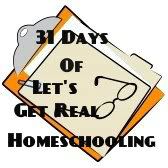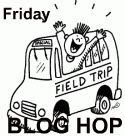
Why history? Why spend time on a subject I hated so much in school? Why spend time on a subject that my child won’t retain anyway? Why torture myself and my kids? How is it really important in the world based on technology?
I could tell you without a past there is no present. Or that to be a good citizen one must know one’s history. Or maybe that one must learn history and memorize those dreaded dates to prove one is educated.
But let me tell you why my family studies history. JOY! Yep, we find joy in studying history. History is a subject we study all together. Starting in first grade, history is comprised of mom reading aloud stories. Yup, history starts as simply as telling stories.
Think about it. When you get to know someone, you don’t just memorize their place of birth, birthdate, and names of parents, kids, and siblings. You get to know them by spending time with them, hearing funny stories about their lives, and listening to their hopes and disappointments. History is the same way---it is getting to know people—not just their dates and vitals, but their stories, dreams, and mistakes.
So we start with stories. Snuggled up on the couch, often with snacks in the afternoon or just before bedtime, we start to learn about people of the past. Scripture stories, American heroes, Ancient cultures around the world, all are excellent starting points. Mythology of other peoples are also a valuable starting point for these myths share the values of a culture.
As my children learned to read, they would take a turn in reading history aloud to the family. Important reading practice was taking place as well as honing public speaking skills. Comprehension was also tested as we discussed our stories. And often during play time these stories popped back up as the center of creative play.
Around 2nd grade, my children started narrating these stories back to me. This first involved drawing a picture and writing a few words or a sentence or two about the story. Help was always offered for spelling and punctuation, if needed. Perfection was not expected. I also tried to add in crafts, cooking, or games that pertained to the history we were studying. We now had snuggly read aloud time, play time, and art time. Nothing stressful here --Just plain old fun!
By 5th-grade, my kids worked their way up to writing a whole paragraph about our history reading. Some kids choose to stop drawing pictures by this age, other children diligently spent hours drawing weapons or political cartoons. I also would start to see a style for learning develop for each child. One child might love to make lists of facts and dates while another loves to make scrapbook pages with elaborate pictures. So another benefit of history is recognizing learning styles for each individual child.
In addition to narrations and pictures, we utilize timelines. A large family timeline hangs up for all to add dates. On this timeline, one might find family birthdays and anniversaries as well as the date Shakespeare’s first play is performed. Any date is allowed, and anyone is allowed to add to it at anytime. Around 6th-grade I buy each child their own timeline book. This is a rite of passage each child looks forward to. Now dates are added to individual timeline books as well as the family timeline. These books really do become keepsakes as each child takes ownership in their individual content.
Disclaimer: Our timeline is not used to memorize dates! Rather it is used to keep track of what is happening when. Our history studies are not always chronological, so the timeline dates help us to realize that about the time the Gutenberg Bible was being published in Germany the Byzantine Empire was conquered by Mehmet II. They help us connect the history happening around the world.
So by the time middle school rolls around, we are reading history, talking about history, and writing about history. And it has all been done together as a family. But now we begin branching out—while still keeping our family read aloud time. At this time I begin teaching writing and research skills through our history studies. I have my child learn to outline and take notes from encyclopedias, magazines, and other history texts. I’ve found that this isn’t as mind-numbing as one might think because as they are working with the history text, they are connecting it to the stories we’ve read. As they outline the facts of The Thirty Year War, they remember the story we read about Emperor Frederick as a child, they remember the Austrian folktales, and they start to connect those stories with the people who lived during this war. They start to think what the values and ideals of the leaders and people and connect those with the facts they learn about the conflict.
Research skills are taught as each child takes ownership in what they study about a particular time period. After read aloud time and reading their assigned history articles each child decides on what they would like to research in depth. A trip to the library ensues, notes are taken, and a paper is produced—1 page to begin with, but soon enough the papers become not only more lengthy, but also more in-depth and thoughtful. Okay, I must admit that the process of creating these papers are not always enJOYable! Every child has complained about this particular process. But the skills we’ve learned getting to this point, have paved the way for success in writing a history paper. And that success is what marks the JOY! To have the skills to create something of their own making is joyful!
And these papers are shared and discussed with the family –often at the supper table. All have the opportunity not only to
learn, but also to
teach. JOY is found in having the opportunity to impart knowledge to others. As mothers we’ve all felt the joy of imparting knowledge to our children---imagine your children having that same kind of JOY.
So while scholars have their reasons the study of history is important, my family has its own reason to study history!
Be sure to check out my
Ancient and
Middle Ages history pages listing some of the specific resources used in our home to study history. Also, I've recently added our
Renaissance resources.






















































































